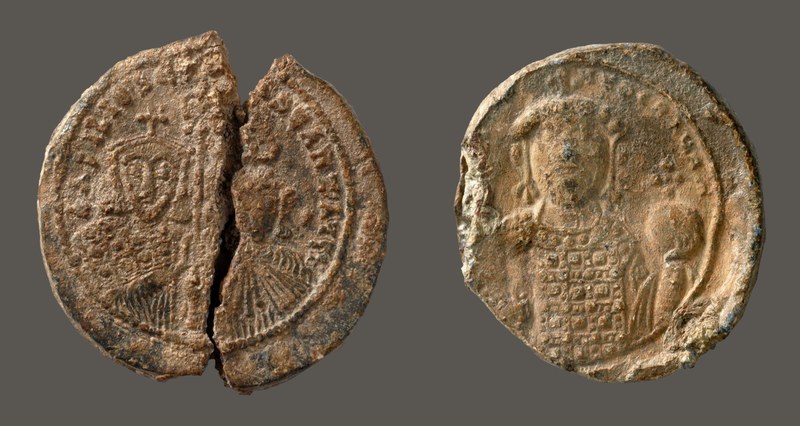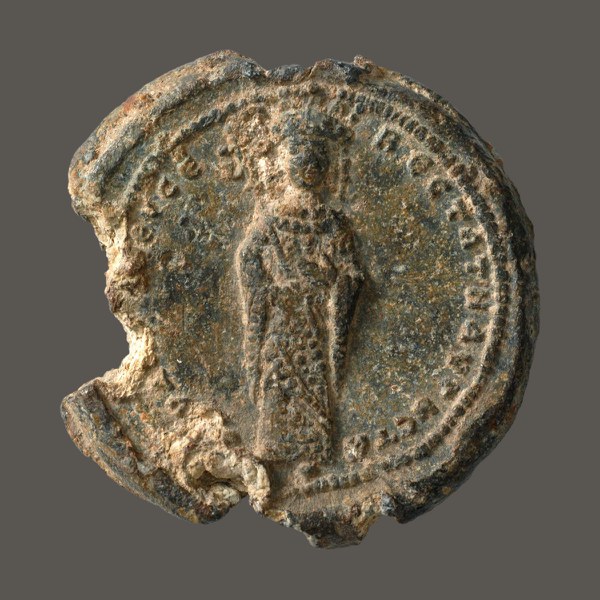
The first augustus (exalted, venerable) was Octavian Caesar, granted the cognomen by the Roman Senate in 27 BC. The subsequent emperors also used augustus and under Diocletian's tetrarchy the title was used to designate the senior emperors, with the junior emperors being given the title caesar. Although the Greek equivalent, sebastos was used by Greek authors within the Roman Empire it never appears on seals, even after the Greek language came to dominate imperial inscriptions.

Augustus, variously abbreviated and preceded by dominus noster (Our Lord), is the first imperial title that appears on Byzantine seals. It was employed almost without interruption until the reign of Leo III, disappearing with the introduction of aniconic seals. Initially the title appears early on with the modifier perpetuus (eternal), and then under Philippikos the phrase multos annos, (many years), was briefly added, being combined as perpetuo augusto multos annos (eternal augustus, [reign] many years) under Leo III. Augustus reappeared beginning on the seals of Basil I in the late ninth century. The last time the title was used on a seal was during the reign of Constantine IX, where augustus appears as autocrator augustus Romaion.
The female form, augusta, was used for empresses from the tenth century until the end of the empire. Later empresses are occasionally referred to as εὐσεβαστάτη (most pious) augusta.






